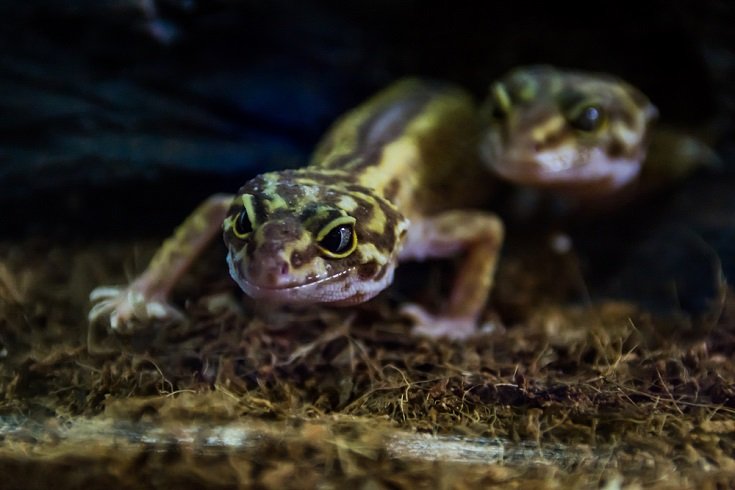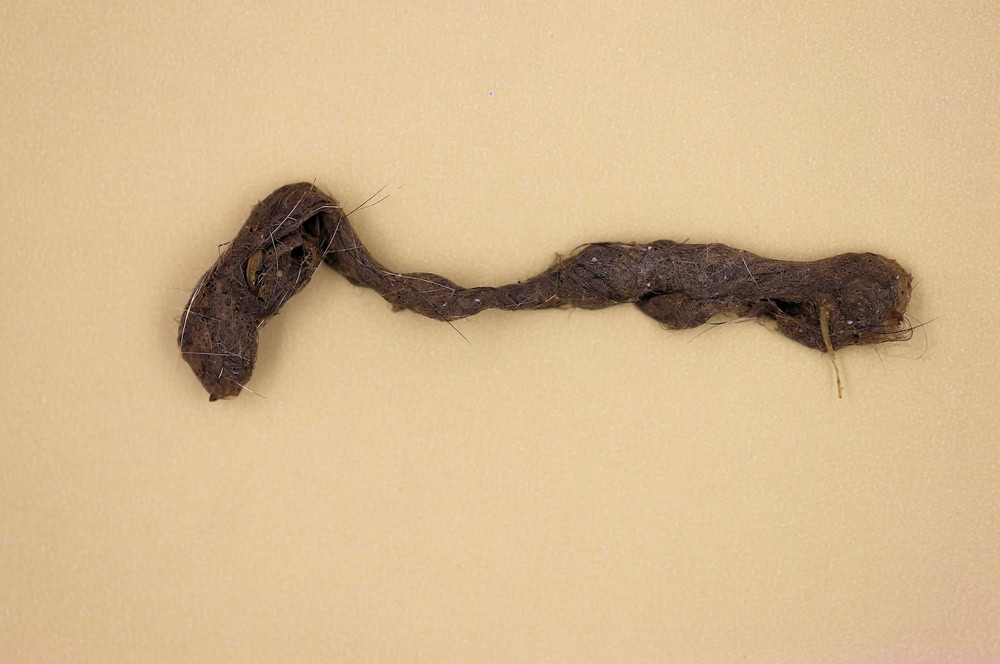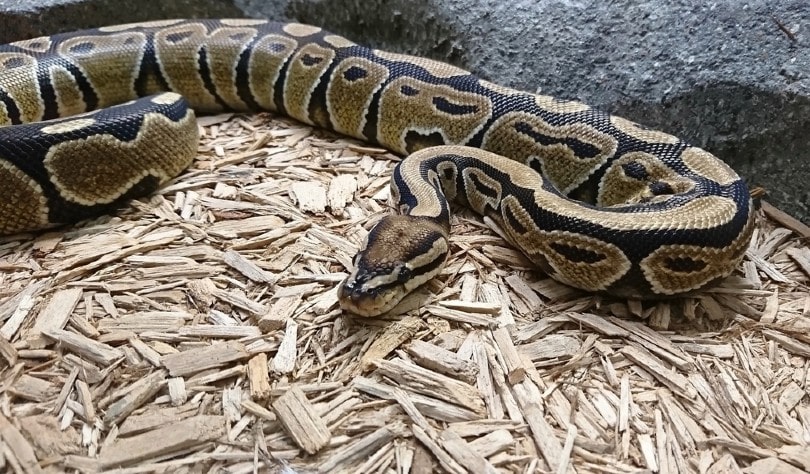VET APPROVED

The information is current and up-to-date in accordance with the latest veterinarian research.
Learn more »If you have just adopted your first leopard gecko (Eublepharis macularius), you are in for a real treat, as they make great pets that can last over 20 years if you care for them properly. A large component of their care is ensuring their environment is properly set up. Like all reptiles, leopard geckos are cold-blooded and, therefore, rely on their environment in order to properly manage their metabolic rates. This makes the temperature and humidity control in their environment very crucial.
The optimal ambient temperature range for healthy adult leopard geckos is 25–30oC (77–86oF). The humidity requirement for a gecko that isn’t shedding is 20%–30%. Read on as we explain more about the environmental needs of these intriguing reptiles.

Maintaining an Ideal Temperature for Your Leopard Gecko
Published guidelines based on research indicate an ideal temperature range for almost all exotic pet reptiles, known as their preferred optimal temperature zone (POTZ). This range is important because reptiles are cold-blooded, which means their metabolism and overall health are heavily influenced by their environment.
The POTZ is a recommendation of the temperature of the enclosure in which your pet will be housed. They should have a basking temperature that exceeds the upper limit of their POTZ by about 5oC. In addition, nighttime temperatures can drop to about 5oC below their POTZ. Let’s look at the POTZ, basking spot temperature, and the “cool” temperature for a leopard gecko.
- Preferred Optimal Temperature Zone: 25–30oC (77–86oF)
- Basking Spot Temperature: Up to 5oC (a 9oF change) higher than the upper end of POTZ. For instance, if enclosure it at 30oC (86oF), basking spot can be at 35oC (95oF)
- Cool Side Temperature: Up to 5oC (a 9oF change) lower than the lower end of POTZ. For instance, if enclosure is at 25oC (77oF), the cool side would be no lower than 20oC (68oF)
It’s important to keep in mind that changes of temperature that are beyond a 5oC (a 9oF change) in either direction of the temperature scale are not advised. For example, if your pet’s enclosure is maintained at 25oC (77oF), their basking temperature should be set to 30oC (86oF).
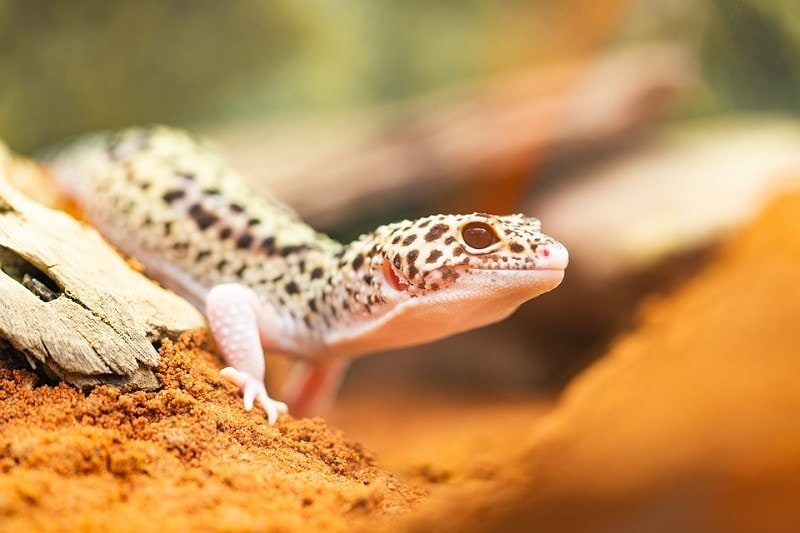
Important Considerations for Leopard Geckos’ Temperature
One of the most intriguing facts about leopard geckos is that they are nocturnal. This means they rest during the day and only wake up around dusk. In the wild, leopard geckos spend the first few moments of their waking hours sitting on a heated rock, log, or bark to absorb heat.
While they need a basking spot in their enclosure, you shouldn’t panic if you don’t see them using the spot during the day; it’s normal for them to only come out at night (when you might have turned it off already).
Heating Your Pet’s Terrarium
The halogen bulb is the best way to heat your gecko’s terrarium. These bulbs closely simulate natural light from the sun by producing UV light that is recommended for reptiles. Leopard geckos don’t have a specific requirement for UVA or UVB; however, they may benefit from its inclusion in their enclosure.
Maintaining an Ideal Humidity for Your Leopard Gecko
The ideal humidity range for a leopard gecko that isn’t shedding their skin is 20%–30%. This requirement drastically increases when they’re shedding, though – the humidity requirements for a leopard gecko shedding can be as high as 75%–80%.
- Tank Humidity: 20%–30%
- Moist Hide Humidity: 75%–80%
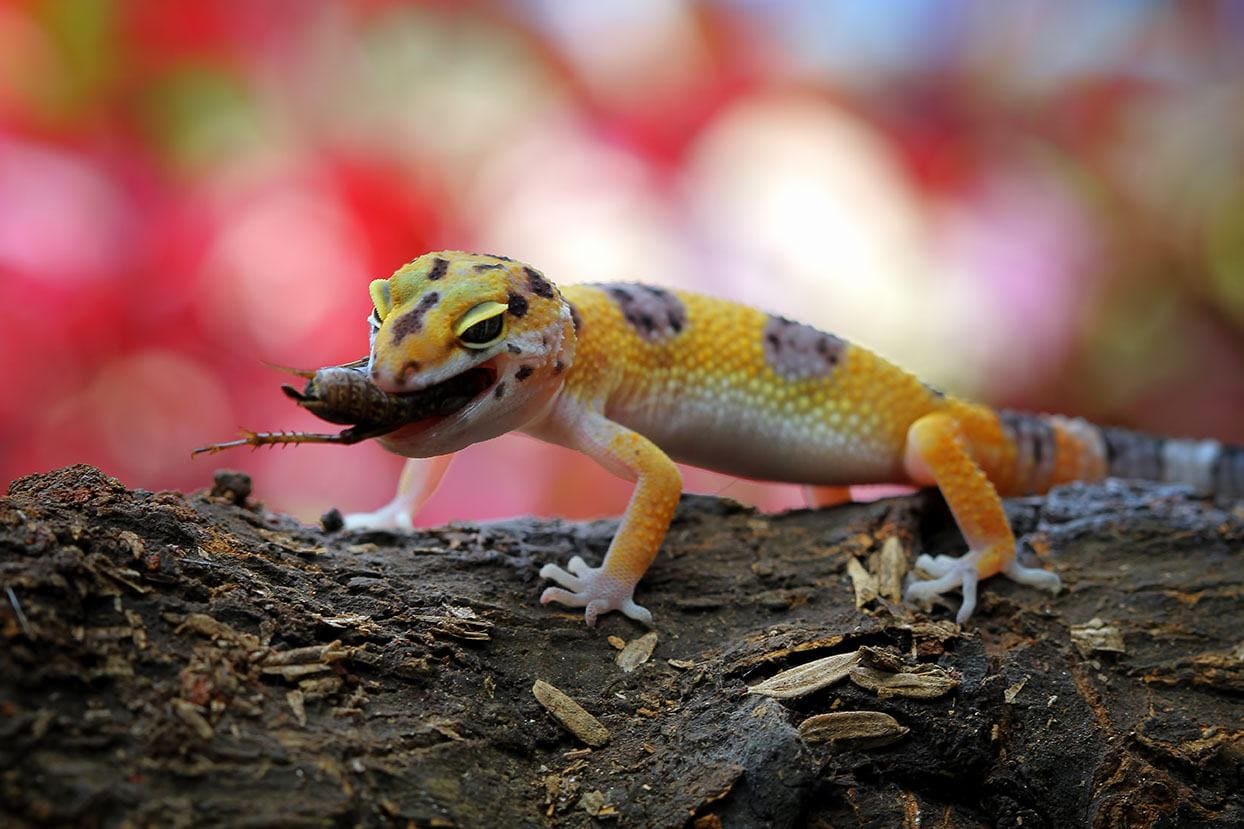
Caves or Hides
Caves or other hiding spots (known as hides) provide mini-environments with varying humidity levels in your pet’s enclosure.
Moist Hide
The moist hide is intended to have a higher humidity than the rest of your gecko’s enclosure. You can purchase a commercial wet hide or build one with a reliable DIY guide. Inside the hide, you will need to place a special substrate, for example, sphagnum moss, that will hold the moisture.
Dry Hide
The dry hide is identical to the moist hide, but you don’t add water and can use other substrates. The dry hide’s primary function is to provide shelter for your pet while they rest. You can place several of these in the terrarium for maximum comfort.
Cool Hide
The cool hide is similar to the dry hide, but you place it in the cooler part of the tank to give your pet a place to relax and escape the high temperatures.
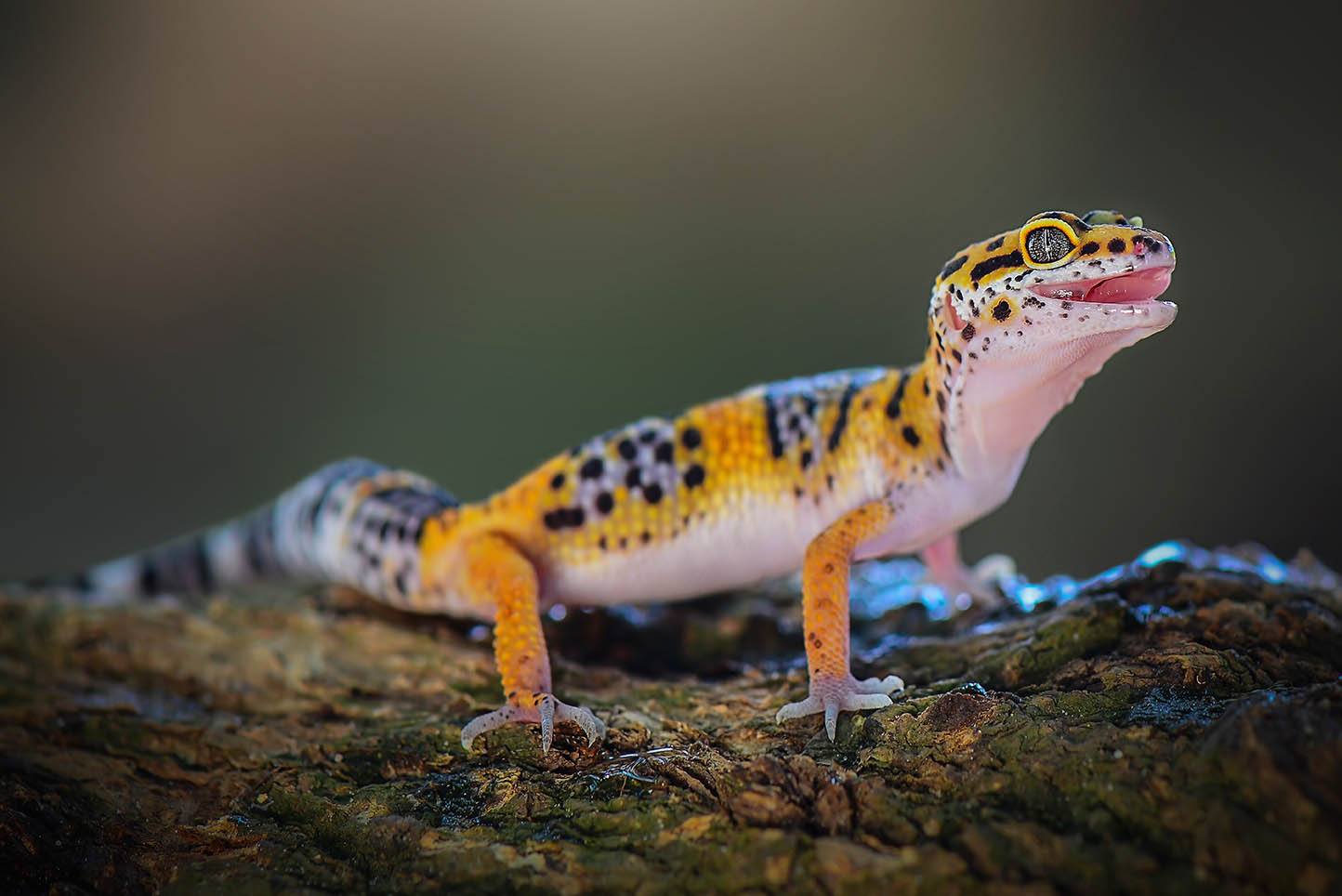

Summary
Maintaining your gecko habitat is crucial to their long-term health. As cold-blooded animals, they rely on the temperature of their environment in order to maintain their metabolism. A leopard gecko’s enclosure should be 25o–30oC (77–86oF), and their humidity levels should be at 20%–30% (assuming they aren’t shedding).
These aren’t the only metrics to monitor; your gecko needs different areas in their enclosure with varying temperatures and humidity levels. We hope this guide has shed some information on the requirements of these fascinating lizards.
Featured Image Credit: Elina Litovkina, Shutterstock
